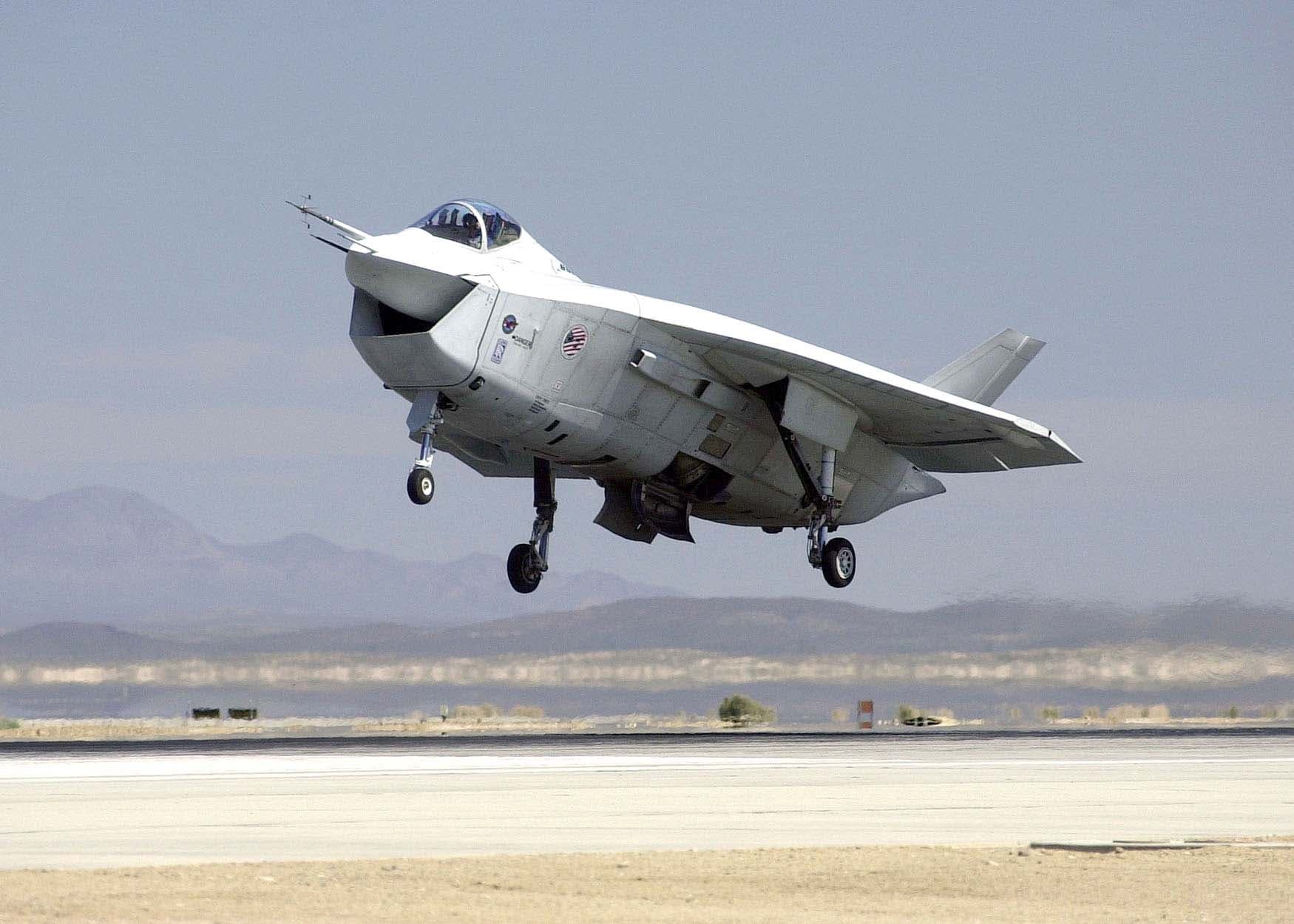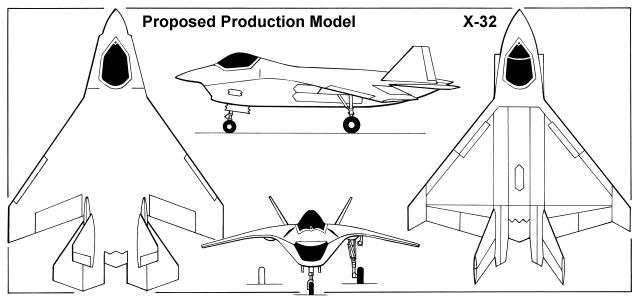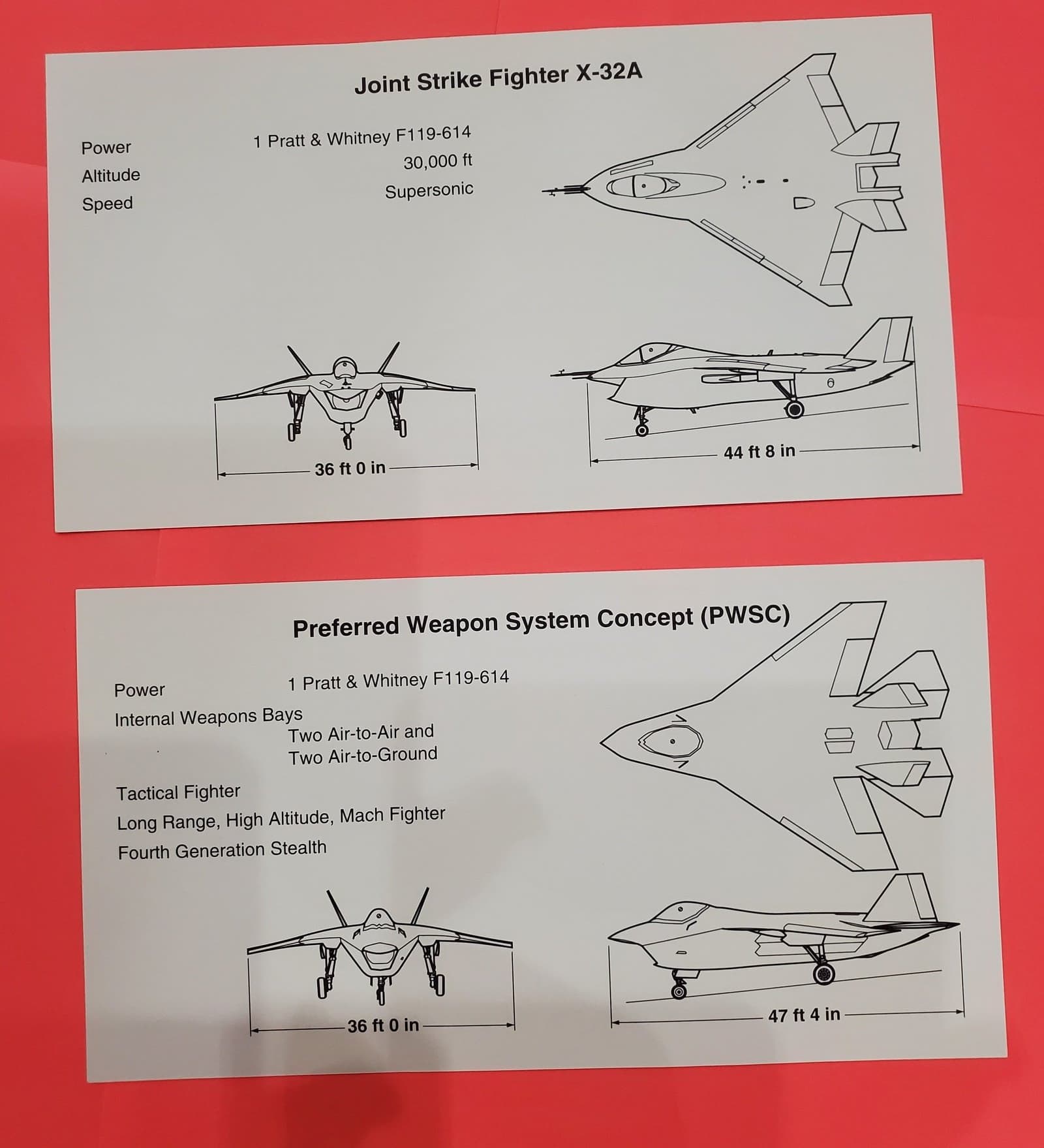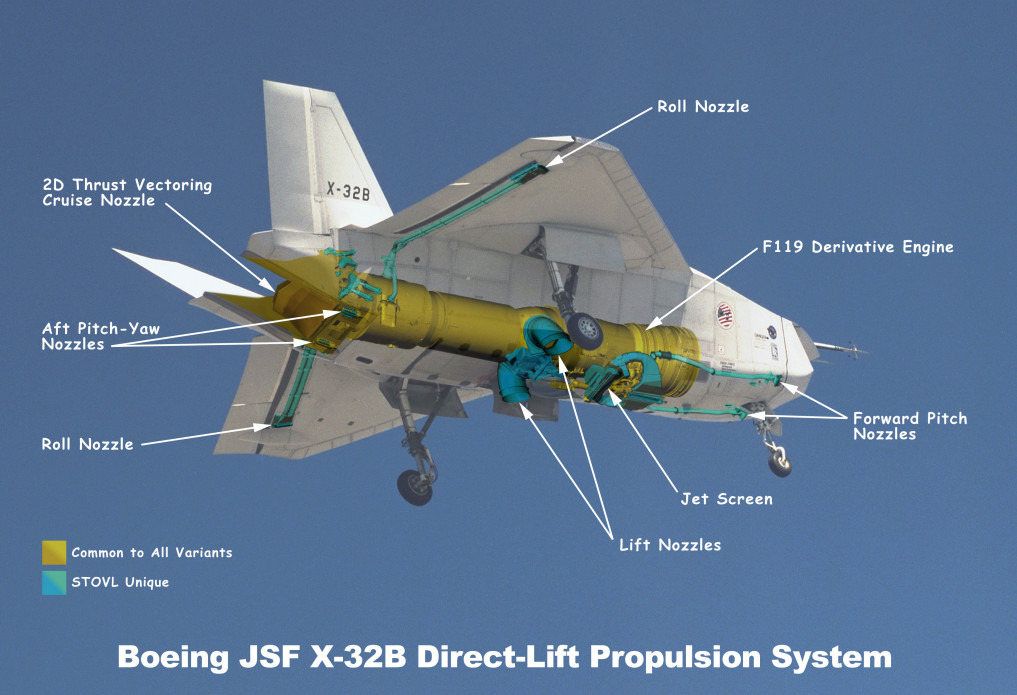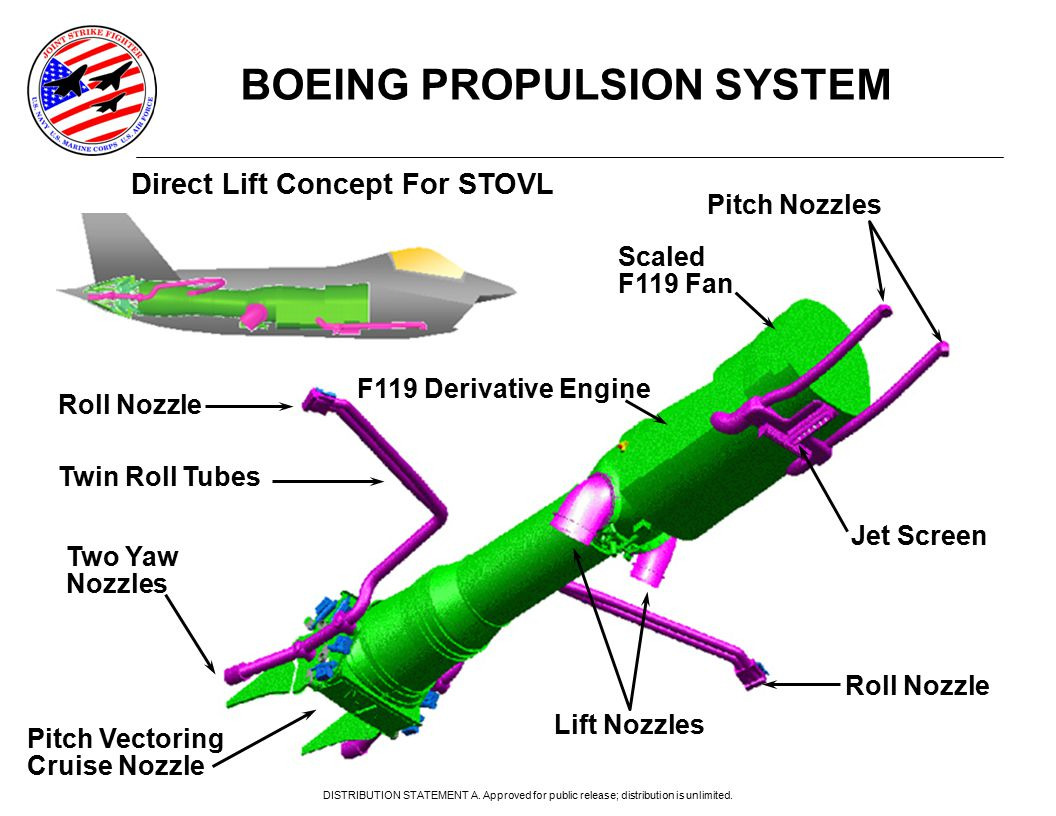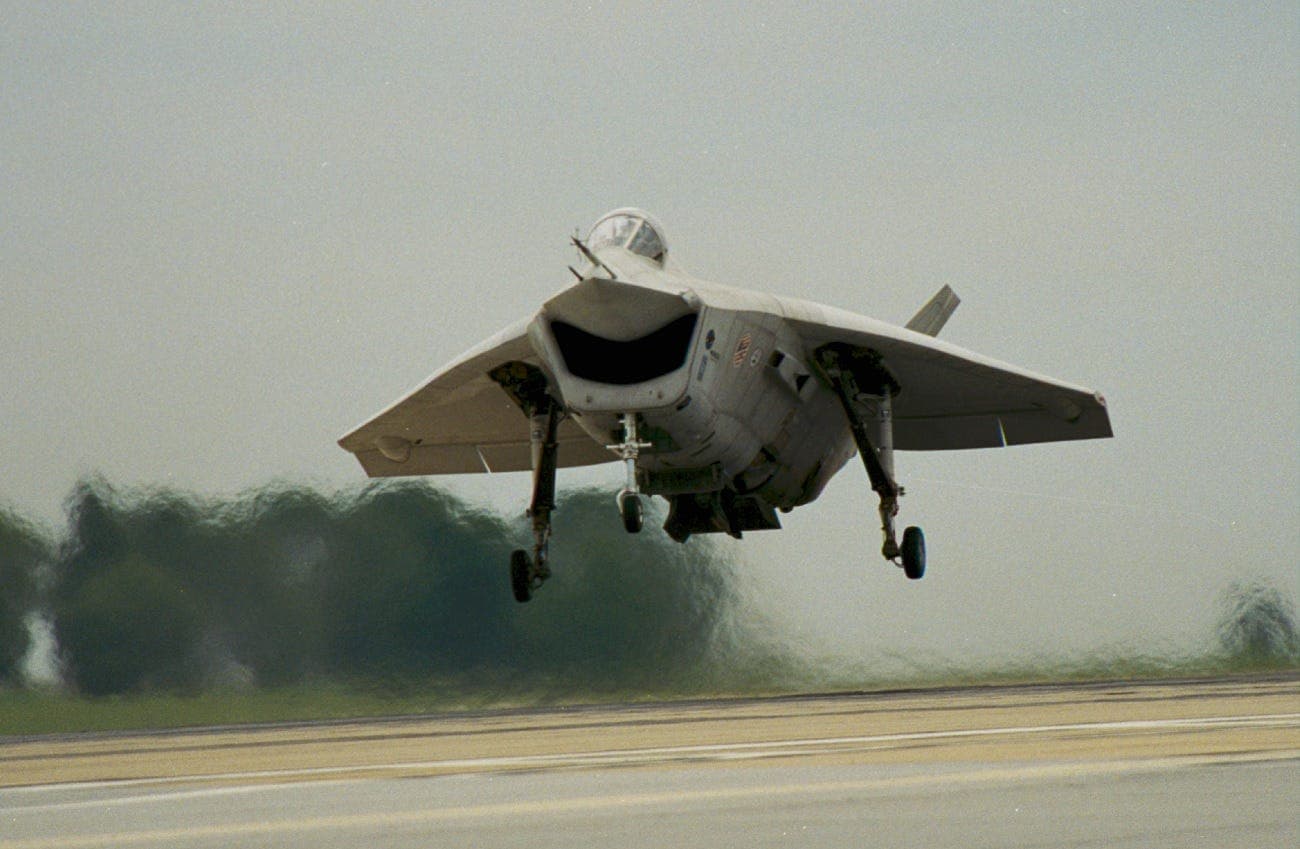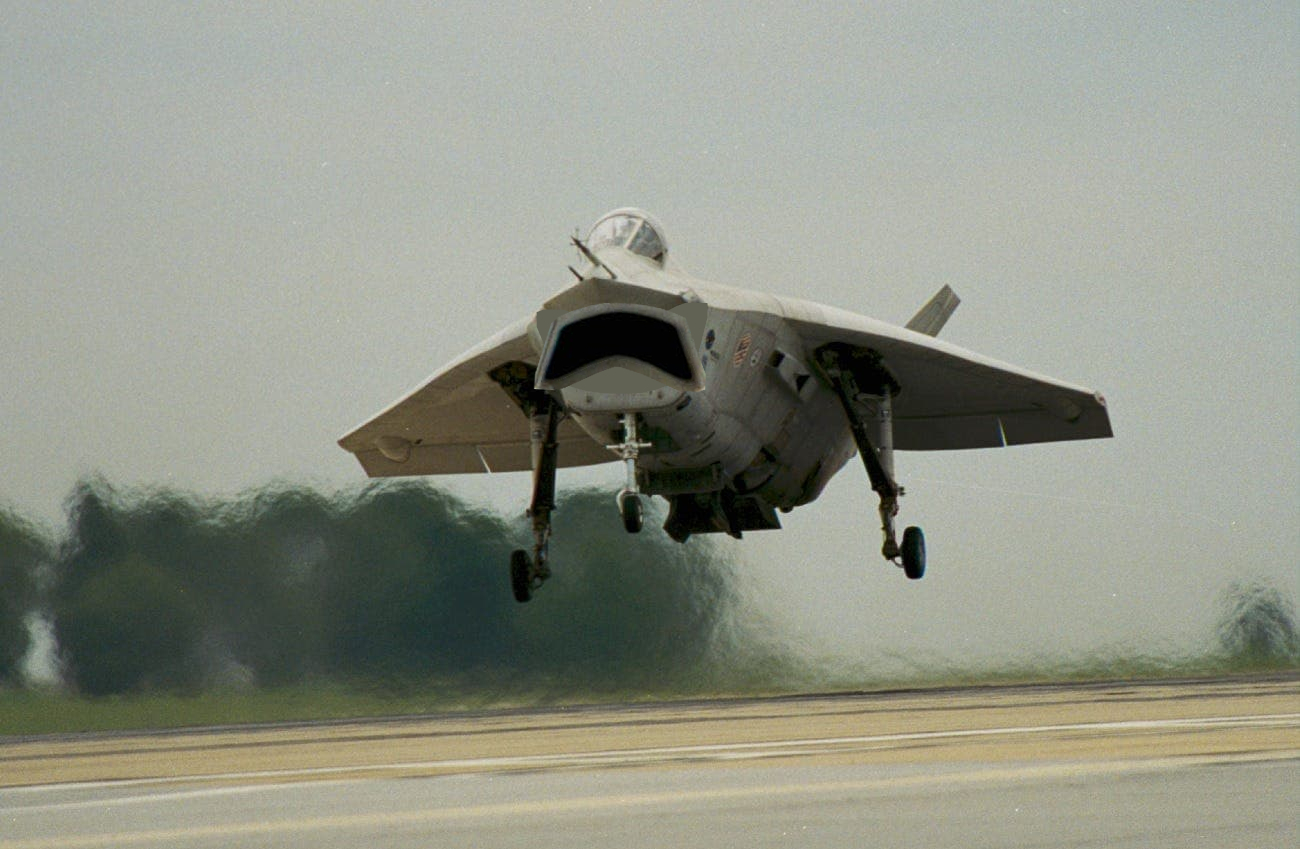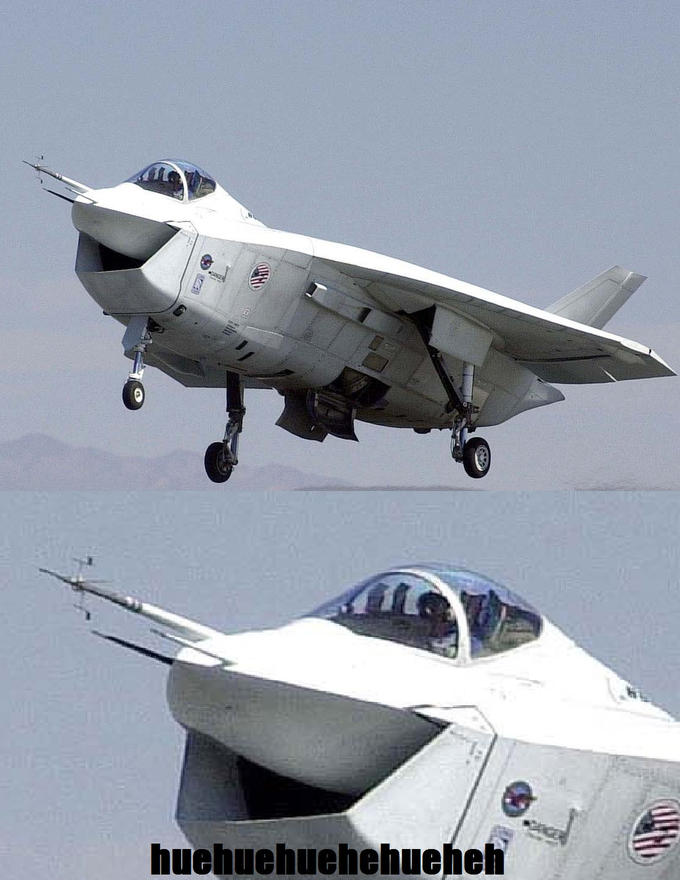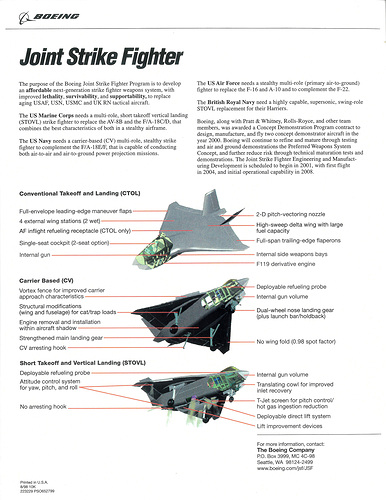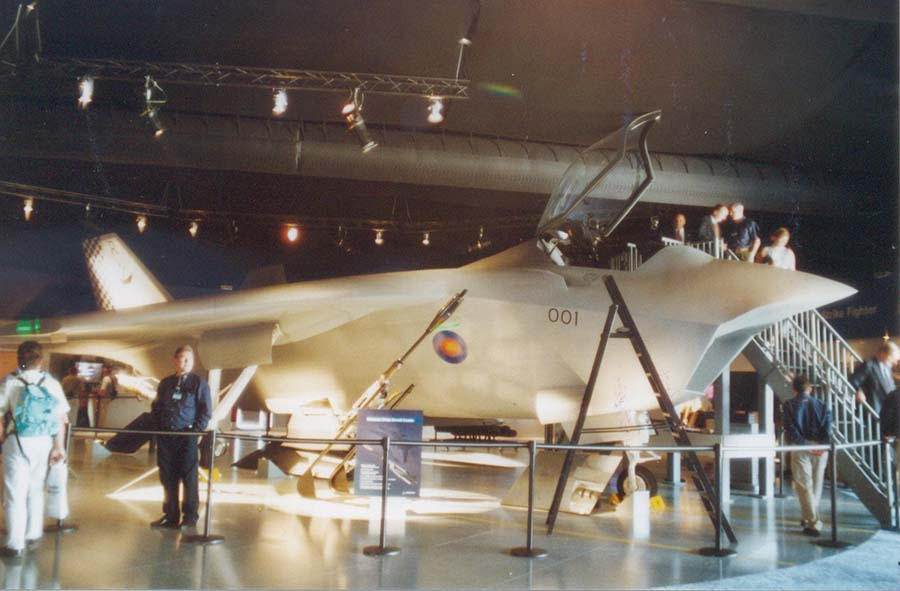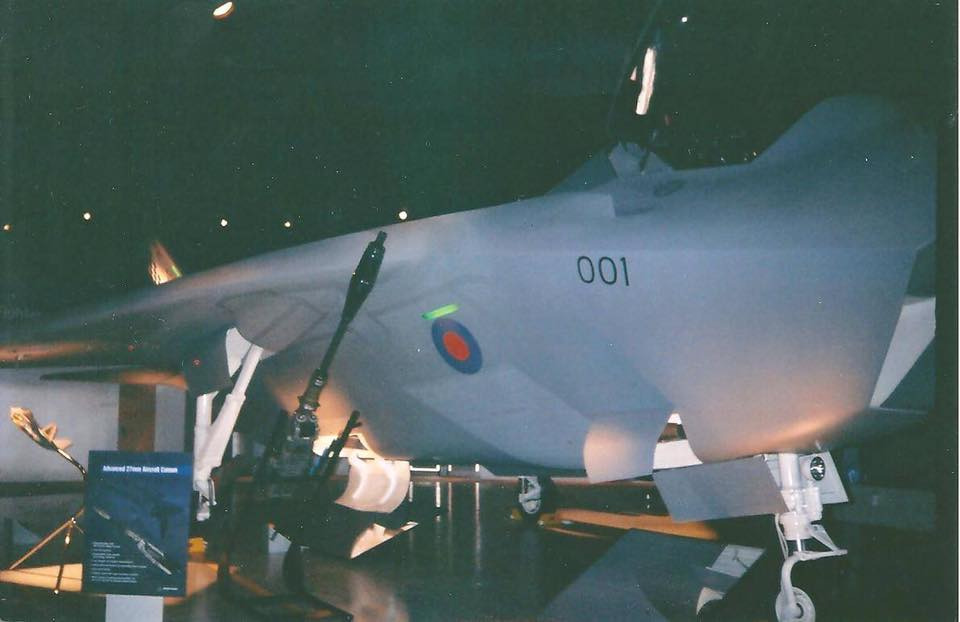- Yes
- No
History
The Joint Strike Fighter (JSF) program was one of the biggest challenges in the history of aviation. Starting from the Advanced Short Takeoff and Vertical Landing (ASTOVL), which was to develop STOVL fighter to replace U.S. Marine Corps’ and Royal Navy’s Harrier jump jet, it eventually become JSF to develop tri-service common fighter platform.
The idea of using the same fighter for all three services is not new, as the F-4 Phantom II did just that. However the JSF had the added challenge of implement a CTOL for the Air Force, a STOVL for the Marines, and a CTOL aircraft for the Navy on single platform.
In the history of aviation, there were very few supersonic aircraft capable of vertical takeoff and landing, and most of them were unsuccessful. So the two finalists―Lockheed Martin and Boeing―went all in on this.
Originally, Boeing hadn’t built a fighter jet since the 1930s. But with the acquisition of McDonnell Douglas in 1997, the company gained a tremendous amount of know-how about fighter development in one fell swoop. Furthermore, McDonnell Douglas had served as the prime contractor on the AV-8B Harrier II program, so Boeing naturally gained valuable STOVL technologies.
While Lockheed Martin pursued complex, high-performance lift fan systems, Boeing took a more conservative approach. At the same time, Boeing was focused on making the airplane as simple and inexpensive as possible.
Unfortunately Boeing’s approach had obvious limitations, and Lockheed Martin’s lift fan system worked well without major problems. As a result, on October 26, 2001, the U.S. Department of Defense declared Lockheed Martin the winner of the JSF program. This also marked the end of the X-32’s history.
Currently the X-32B is on display in the Patuxent River Naval Air Museum, along with its competitor X-35C.
Design
Airframe
The X-32 is an aircraft with a very unique design. It has a ‘mouth’ like air intake reminiscent of an F-16 or A-7, and delta wings to increase fuel payload.
The X-32 and X-35 were just concept demonstrators, and would be modified for production, but the X-32 required even greater changes. This was an inevitable choice to meet the Navy’s requirements.
The Preferred Weapon System Concept (PWSC) shows how the production X-32’s would look like. Mockups of PWSCs exist, but there is no flyable aircraft.
Engine
The X-32B is powered by JSF-119-PW-614S turbofan engine, a derivative engine of Pratt & Whitney F119. For the X-32B, it features ‘Direct Lift’ propulsion system, with lift nozzles and additional pitch/yaw/roll nozzles for vertical takeoff and landing.
There is also a jet screen under the engine inlet. This creates a sheet of cool bypass air between lift nozzles and air intake, minimizing hot gas ingestion during vertical landing.
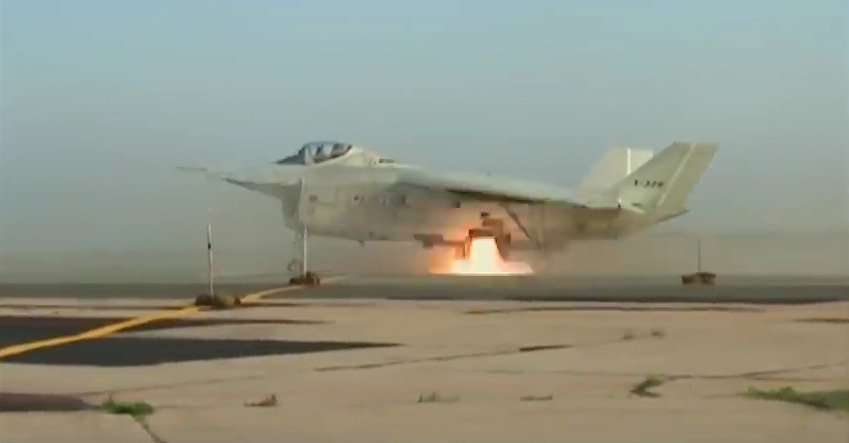
Unfortunately, this was less effective than Boeing engineers had anticipated, and in fact caused a two small accident during testing; pop surge or compressor stall. This was also an issue with Harriers, which uses a similar approach for VTOL.
One of the X-32B’s biggest issue is that it can’t fly supersonic when it is capable of vertical takeoff and landing, and vice versa. There have been short takeoffs and supersonic flight in the same flight, but not vertical takeoffs and landings.
This is why the air intake inlet (‘chin’) has been removed in the photos taken during the X-32B’s VTOL tests: to reduce weight and increase the size of the air intake for the higher flow rates required during VTOL. In terms of weight savings, landing gear covers were removed during VTOL tests.
Despite all this, the X-32B had significantly less thrust margin for VTOL than the X-35B.
Avionics
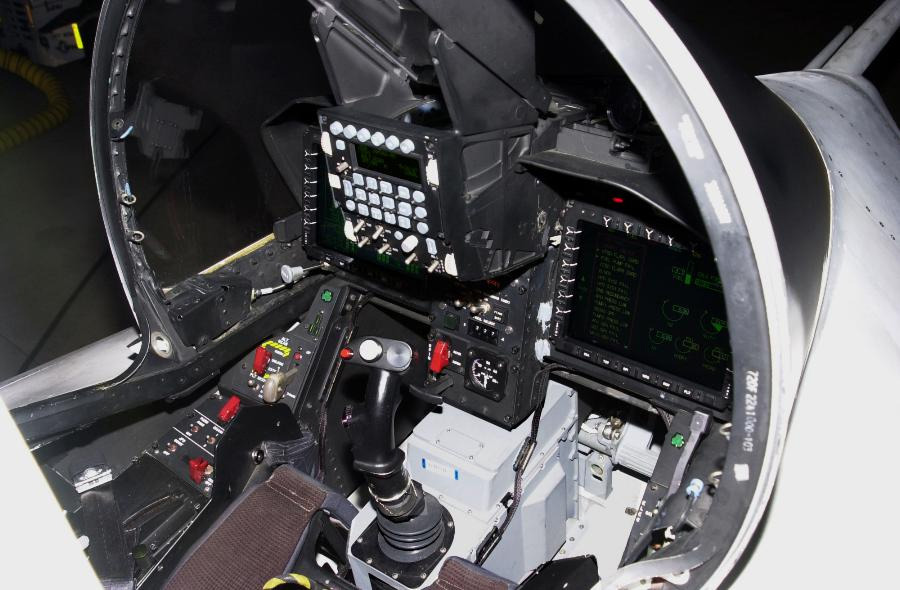
(Cockpit of the X-32)
Since the X-32 is a concept demonstrator, it lacks major avionics like radar and RWR. It’s unclear which avionics the X-32 would have had, as its shape would have changed significantly in production.
Weapons
The X-32 have limited weapons carriage capability, and it is not equipped with countermeasures.
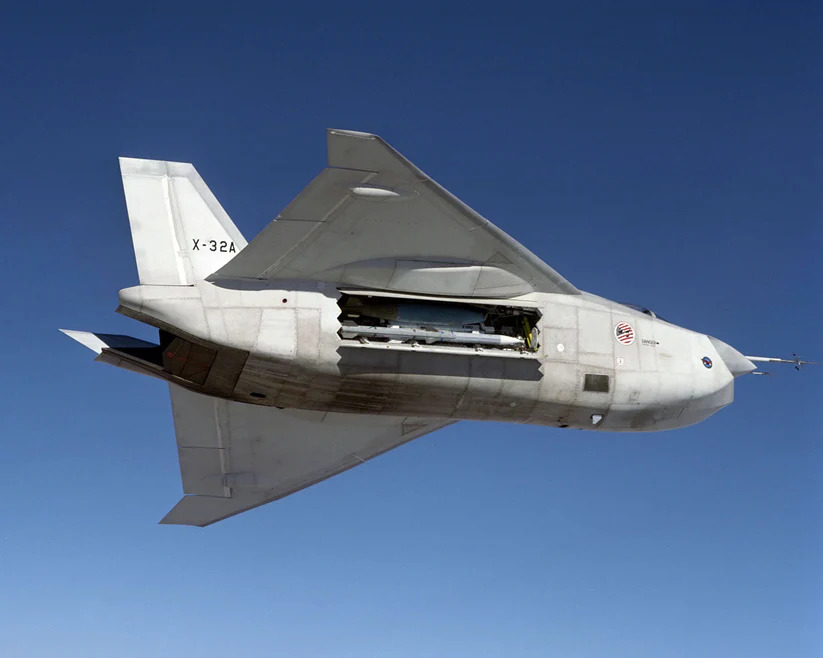
There are two main weapon bays on each side of fuselage. Each weapon bay have two hardpoints, capable of load one 2,000 lb or 500 lb bomb and one AIM-120C missile.
Some document mentions it is being able to fit six AIM-120s inside, but this has never been verified in a flight test, and not even a single mockups exist depicting this configuration. Also the PWSC was planned to have only four internal hardpoints.
Specifications
Pilot: 1
Length: 43 ft 8.6 in (13.33 m)
Width: 30 ft (9.14 m)
Weights:
- Empty: 24,030 lb (10,900 kg)
- Maximum takeoff: 38,000 lb (17,200 kg)
Wing area: 590 sq ft (54.8 m²)
Powerplant: JSF-119-PW-614S
- Maximum thrust: 42,000 lbf (186.82 kN)
Fuel capacity: 20,000 lb (9,071 kg)
Performances:
- Maximum speed: Mach 1.6
- Minimum speed for STOVL mode: 100 kt (180 km/h)
Armaments:
- Hardpoints: 4 internal
- Air-to-air missiles: 4× AIM-120C AMRAAM
- Bombs: 2× Mk 82/84
Sources
- Battle of the X-Planes from NOVA
- Boeing X-32A
- The Affordable Solution - JSF
- Select Products in Boeing History
- X-32B takes first test flights at Pax
- Boeing JSF X-32B Completes Testing with Supersonic Flights - Jul 30, 2001
- American Military Helicopters and Vertical/Short Landing and Takeoff Aircraft Since 1941 by E.R. Johnson, Ted Williams
- About Boeing X-32
